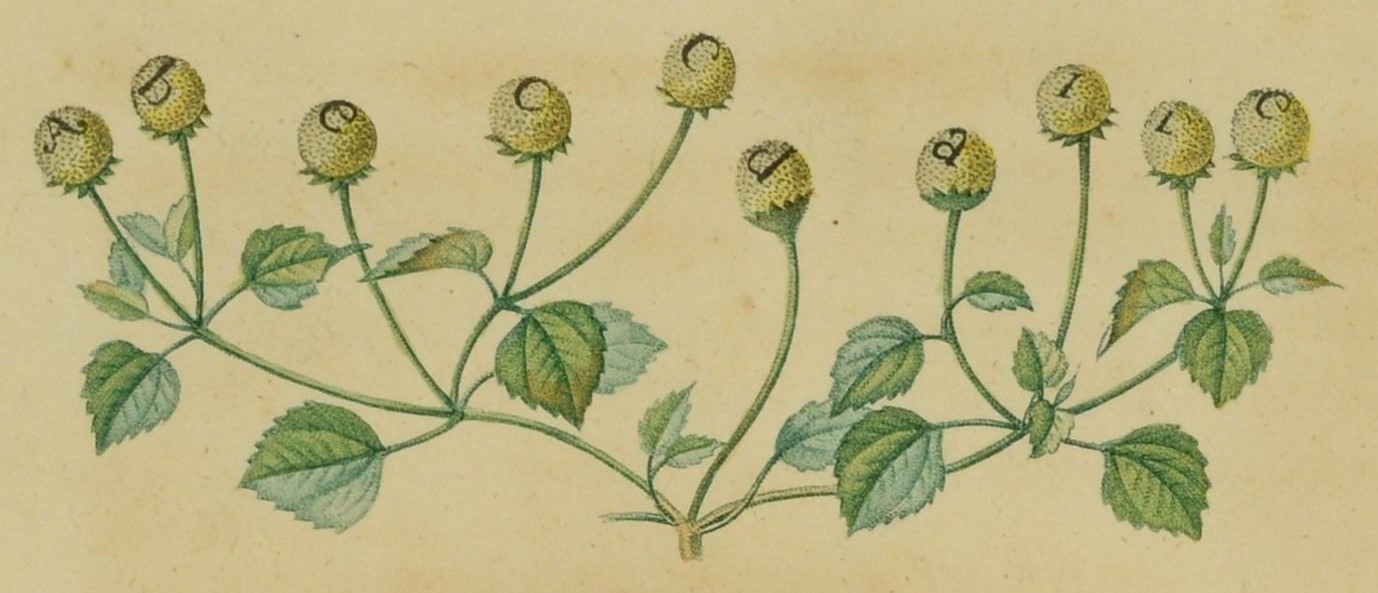☙ Jambu
Acmella oleracea (L.) R.K.Jansen (1985)
= Spilanthus, as "Cresson du Brésil", given by Delachénaye.WFO
Period English: TBC.
Period French: abécédaire m.; cresson du Brésil m.BD
Sentiments:
🏶︎ Volubility ▲︎◆︎ (1867-1884).GAL JS CMK KG
Region: Naturalised worldwide, potential origin South America.
Seasonality: Annual or perennial; flowers summer to autumn.
Period Colours: ... sur son centre des taches qui souvent ont la forme de lettres, ainsi que l’indique son nom français. [...] fleurs jaunes et en forme de boutons. A mesure que la végétation s’avance dans les fleurons nombreux et pressés du centre, ils prennent une teinte rembrunie, qui forme des figures souvent bizarres. BD
Other Included Species: TBC.
🜱 On the Abecedary: Most other florigraphy authors I have encountered, including some of the time, have assumed the 'abecedary' is a mistake - in usual parlance, an 'abecedary' was a written work composed of an entry for each letter of the Latin alphabet (imagine an 'ABC' book for children). The assumption is that, like the word 'poetry' originating from 'poesy', or a 'bouquet' (the two are synonymous in French), the abecedary arose from some confusion in translation and was copied between later incautious authors.
I am excited, therefore, to notice Delachénaye's identification of the jambu as her 'abécédaire', further noting in her entry that this is a colloquial name for the flower in French, arising from its petals seeming to have letter-like figures on them. I believe this is the source of the 'abecedary' of the English authors later on.
Of course, the criticism is otherwise fair - it's true that most authors appear to have copied from other sources, many with little discretion. Still, finding the identity of this flower has been a little victory in my research.
Abécédaire de Flore
◼︎ B. Delachénaye, 1811

Plate 1: Figure 1, "Cresson du Brésil".
DESCRIPTION DES PLANTES
DE L’ABÉCÉDAIRE DE FLORE.
PREMIÈRE PLANCHE.
(69)